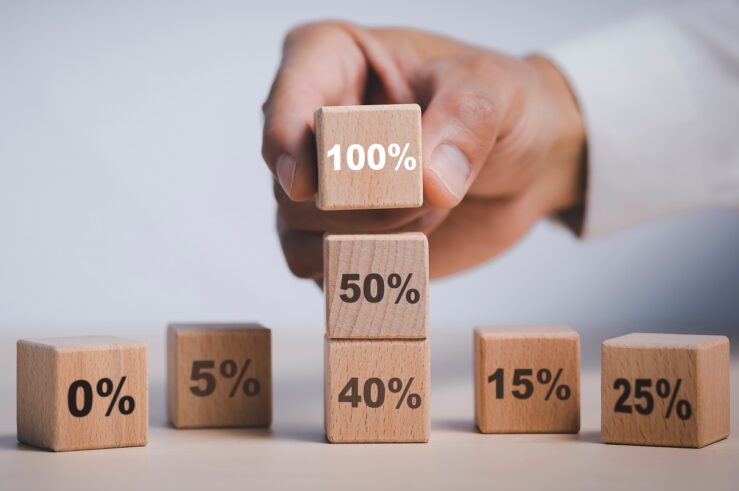Live Nation Breakup: Are Mergers Really to Blame for Ticketmaster’s Problems?
The U.S. Justice Department (DOJ) announced yesterday that it has filed suit, along with 29 states and the District of Columbia, charging Live Nation Entertainment Inc. and its subsidiary Ticketmaster LLC with monopolizing the live-events industry in violation of Section 2 of the Sherman Act. The suit, filed in the U.S. District Court for the ... Live Nation Breakup: Are Mergers Really to Blame for Ticketmaster’s Problems?
How Should We Measure Competition?
Competition is the driving force behind the success of markets. It’s hard to imagine a thriving market economy without the presence of competitive forces. But how do we actually measure competition? I use the term all the time, but do we actually have a measure of it? This question is more complex than it may ... How Should We Measure Competition?
What We Know About the Rise in Markups
In my research and newsletters, I’ve written about how to interpret markups—mostly on the theory side. I haven’t devoted much space explaining the empirics. How high are markups in the United States? Are they rising? If so, by how much? This post seeks to answer those questions. I’m writing it after reading a new paper ... What We Know About the Rise in Markups
Kroger/Albertsons: Is Labor Bargaining Power an Antitrust Harm?
The Federal Trade Commission’s (FTC) recent complaint challenging the proposed merger of the supermarkets Kroger Co. and Albertsons Companies Inc. has important implications for antitrust enforcement in labor markets. Central to the FTC’s case is how it chooses to define the relevant markets, and particularly the commission’s focus on unionized grocery workers. The complaint alleges ... Kroger/Albertsons: Is Labor Bargaining Power an Antitrust Harm?
The Conundrum of Out-of-Market Effects in Merger Enforcement
Section 7 of the Clayton Act prohibits mergers that harm competition in “in any line” of commerce. And, indeed, the Supreme Court’s decisions in Philadelphia National Bank and Topco are often cited on behalf of the proposition that this means any single cognizable market, and that anticompetitive effects in one market cannot be offset by ... The Conundrum of Out-of-Market Effects in Merger Enforcement
Why Armen Alchian Is the GOAT
Tyler Cowen has a new online book out titled “GOAT: Who is the Greatest Economist of All Time, and Why Does it Matter?” While there are potential problems in treating ideas like basketball, the project is a fun, fast read overall. As the author of a newsletter with frequent gifs, I’m all for encouraging light-hearted ... Why Armen Alchian Is the GOAT
Is Amazon’s Scale a Harm?
Under the leadership of its professional anti-Amazoner Chair Lina Khan, the Federal Trade Commission (FTC) has finally filed its antitrust complaint against Amazon. No, not the complaint about how it’s unfair to take six clicks to cancel your Prime membership. This is the big one. It mostly revolves around sellers needing to use Amazon’s fulfillment ... Is Amazon’s Scale a Harm?
Are Markups Really SO Bad?
Concentration is a terrible measure of [insert basically anything people actually care about]. Have I said that before? Concentration tells us nothing about market power, efficiency, or whether policy changes can do anything to increase welfare. Economists know that, especially industrial organization (IO) economists. If we want to measure market power for a seller, a better measure is ... Are Markups Really SO Bad?
Competition Increases Concentration
A market with 1,000 tiny sellers is not some ideal market. Concentration can be extremely beneficial, leading to economies of scale and stiffer competition to win a big share of the market. Yet the Federal Trade Commission (FTC) and U.S. Justice Department’s (DOJ) draft merger guidelines double down on the idea that concentration is inherently a problem. ... Competition Increases Concentration
New Merger Guidelines Are As Expected. That’s Not a Compliment.
Fifteen months after the close of the comment period, we finally have the release of the draft merger guidelines by the Federal Trade Commission (FTC) and the U.S. Justice Department (DOJ). While there is a lot to digest in the 51 page document with over 100 (largely stale) footnotes, the broad picture is clear: the goal of ... New Merger Guidelines Are As Expected. That’s Not a Compliment.
What Is a Barrier to Entry?
Why do monopolies exist? Many textbooks point to barriers to entry as a cause of monopolies. Tyler Cowen and Alex Tabarrok’s textbook says: “In addition to patents, government regulation and economies of scale, monopolies may be created whenever there is a significant barrier to entry, something that raises the cost to new firms of entering the industry.” ... What Is a Barrier to Entry?
How Much Information Do Markets Require?
One of the biggest names in economics, Daron Acemoglu, recently joined the mess that is Twitter. He wasted no time in throwing out big ideas for discussion and immediately getting tons of, let us say, spirited replies. One of Acemoglu’s threads involved a discussion of F.A. Hayek’s famous essay “The Use of Knowledge in Society,” wherein ... How Much Information Do Markets Require?














